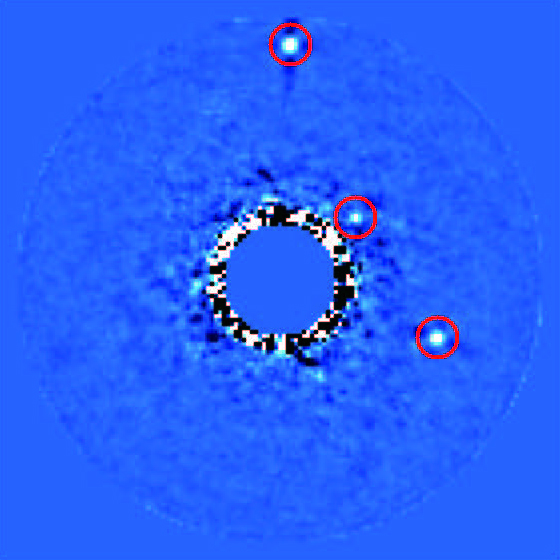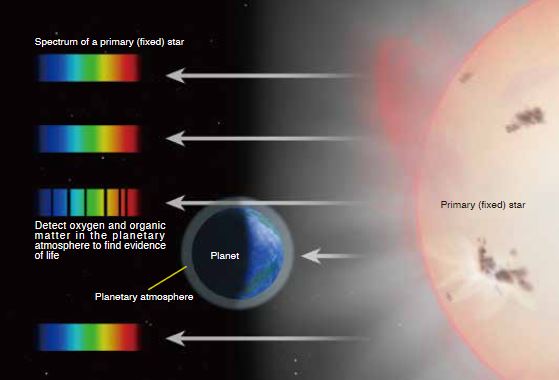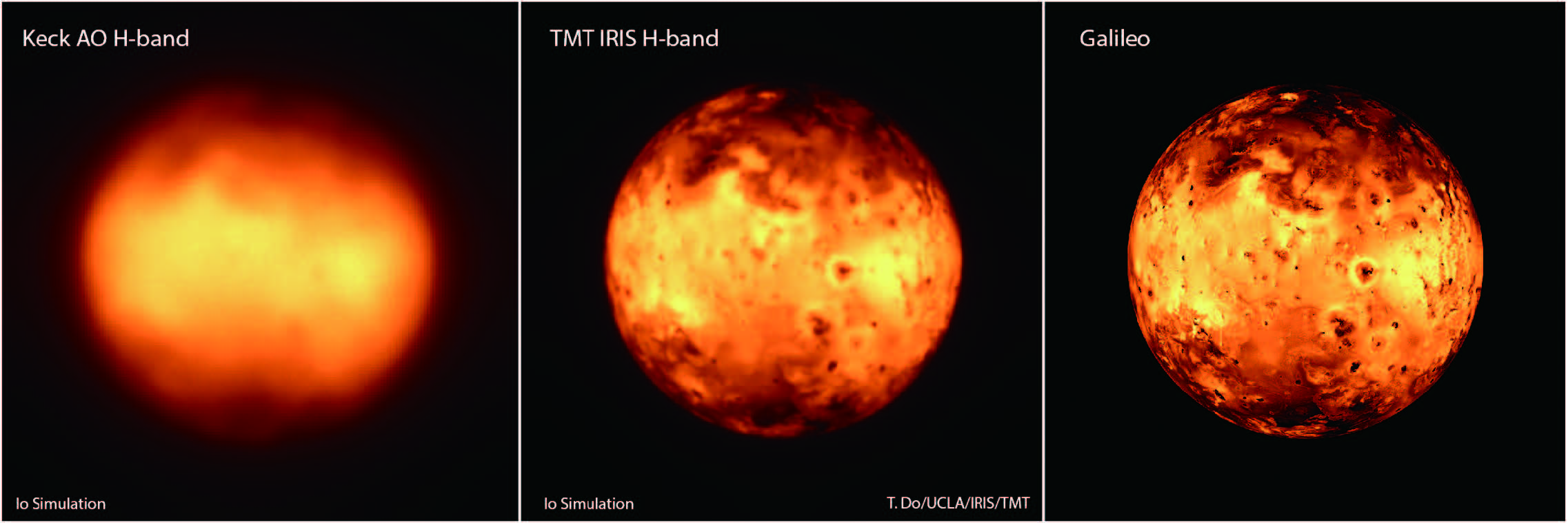Exhibitors' information
National Astronomical Observatory of Japan,TMT Project /ALMA Project
Contents
Thirty Meter TelescopeALMA project
Thirty Meter Telescope
TMT is an ambitious project with plans to construct on Hawai`i an extremely large telescope with an aperture of 30m with the cooperation of five countries including Japan. The major goals of TMT include search for signatures of life on extrasolar planets and the history of our solar system.
◆TMT Overview
・Aperture:30 meters / 492 segment mirrors
・Wavelength range:0.31-28μm
・Diffraction limit:8miliarcsec (at 1μm)
・Sensitivity:More than 100 times better than conventional telescopes
(when observing a point light source with adaptive optics)
English Brochure (PDF, 2MB)
In Search for Life on Extrasolar Planets
Our Solar System
Science Teams
Maunakea and TMT
In Search for Life on Extrasolar Planets
◆Direct observations of Earth-like planetsMany planetary systems around stars other than our Sun are being discovered today, and we are learning that there exist planets with various sizes and orbits. Recently, planets similar in size as Earth have been discovered, indicating that there are planetary systems much like our own Solar Sytem. Today, infrared observation has advanced to a point of being able to actually capture images of these planets.

Three Jupiter-like planets around HR8799 discovered by the Subaru Telescope (in red circle). TMT will attempt to directly capture even smaller Earth-like planets. (Credit: CHARIS Team of Princeton University, and NAOJ)
◆Are we alone?
Are there extrasolar planets with existence of life? This is a question common to all humanity. TMT aims to discover signs of life on these planets.

TMT will be able to study the composition of the atmosphere of extrasolar planets through spectroscopic observation. Discovery of oxygen molecules and organic substances could be a signature of existence of extra-terrestrial life.
Exoplanets with TMT (TIO website)
Our Solar System
The advent of TMT will enable us to tackle long-standing questions concerning the formation of the solar system, the origin of planetary volatiles, the physics of the ice and gas giants, and the unraveling of the complex dynamical history recorded in the Kuiper belt.
The view of Jupiter's moon Io when observed using adaptive optics. The image on the left is a simulation of a conventional telescope with an aperture of 8 to 10 meters, and the image in the center is a simulation of TMT. The image on the right is the actual image taken by the Galileo spacecraft (Credit: T. Do/UCLA/IRIS)
Our Solar System with TMT (TIO website)
Science Teams
The TMT International Science Development Teams (ISDTs) are groups of researchers who work together to provide scientific guidance and feedback to the TMT project, to stimulate planning for future TMT observing programs, and to build connections between the TMT and the international astronomical communities. The ISDTs foster scientific collaboration across the TMT partnership and beyond, into the broader astronomical community. Prospective applicants are encouraged to contact the conveners to learn more about the ISDTs and their activities.ISDTs (TIO website)
Maunakea and TMT
TMT is planned to be built on Maunakea, Hawai`i. Maunakea is a 4000-m mountain with gently inclined slopes, isolated in the mid-Pacific Ocean from any other land mass, which makes the mountain one of the exceptionally well-endowed sites for astronomical observations in the world. Maunakea is also a sacred place for the people of Hawai`i, connecting them to their k?puna (ancestors) and akua (gods). It represents a symbol of the Hawai`i culture deeply rooted in nature. We are committed to the TMT Project without impeding traditional and customary cultural practices of Hawai`i.ALMA project

These long asked questions of the universe still remain a mystery, but they are about to be solved by the world’s most advanced telescope ALMA, a giant telescope that was constructed at an altitude of 5,000 meters in Chile and started its scientific observations from 2011. With a visual acuity of 120,000/20, ALMA is capable of capturing overwhelmingly high quality images of very weak radio waves emitted by gas and dust from which stars and planets are formed and materials that could be building blocks of life.
ALMA has a mission to unveil the mechanism of planet formation and to find a clue to the origin of life in global partnership of 22 countries and regions including Japan. Here, you can get the picture of grand mysteries of the universe to be explored by ALMA and astronomical endeavors to address such big scientific challenges with ALMA.
Radio Waves to Reveal Cosmic Structure
The key to solve mysteries of the universe is to capture radio waves coming from the universe.Stars shining in the night sky emit visible light with a high surface temperature of several thousands to several tens of thousands degrees. Optical telescopes like Subaru can capture light emitted from stars.
On the other hand, the temperature of planet-forming dust and gas and amino acids contained in gas is minus 260 degrees Celsius, which is too cold to emit light. ALMA receives radio waves emitted from dust and gas, and amino acids, to reveal the distribution and characteristics of materials that form galaxies, stars, and planets, as well as the building blocks of life.
ALMA observations cover a range of wavelengths called “millimeter/submillimeter” waves. There are other existing telescopes that observe millimeter/submillimeter waves, but ALMA is an outstanding telescope with exceptionally high sensitivity and resolution capable of imaging the unknown universe that was never possible to see before.
About ALMA
ALMA 10th Anniversary
-
Address
1818588
2-21-1 Osawa, Mitaka, Tokyo 181-8588, JAPAN -
Web site, SNS

